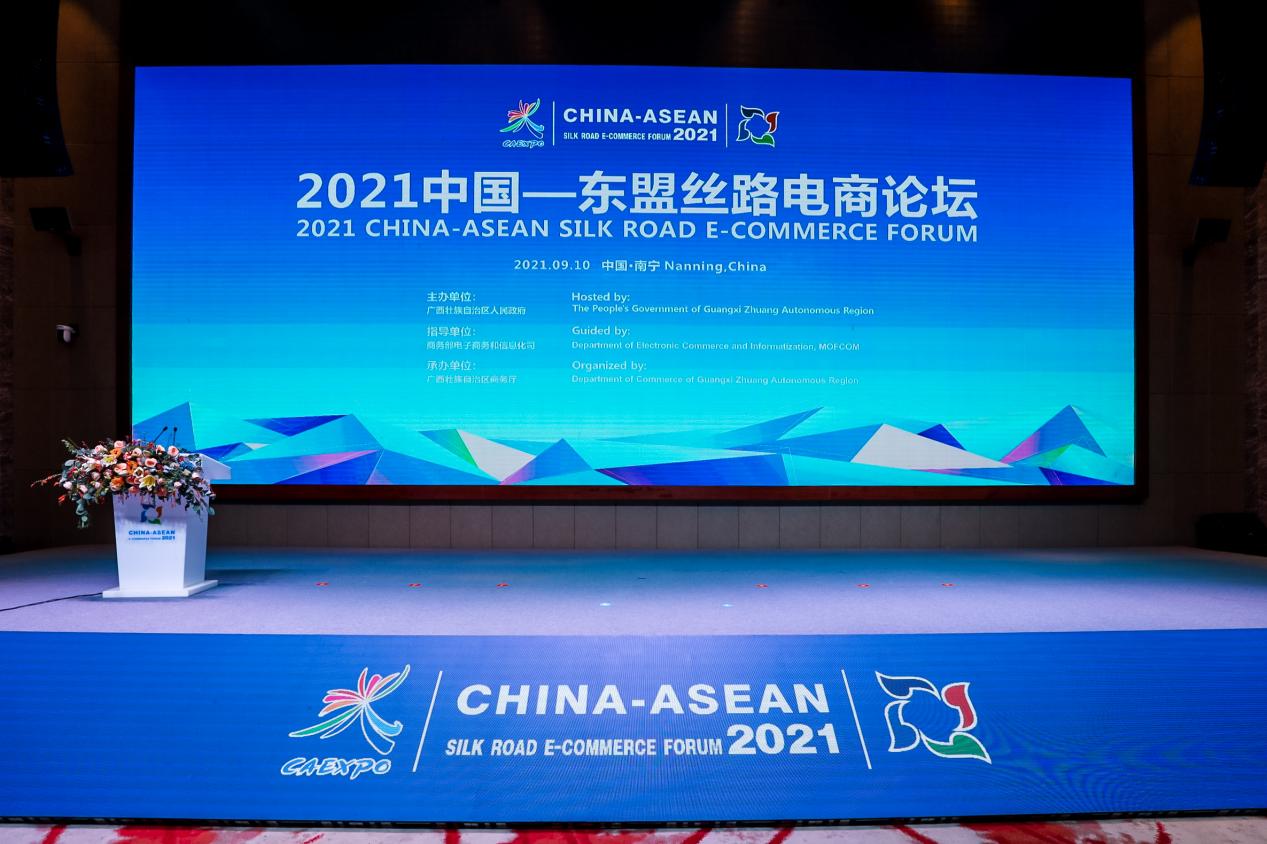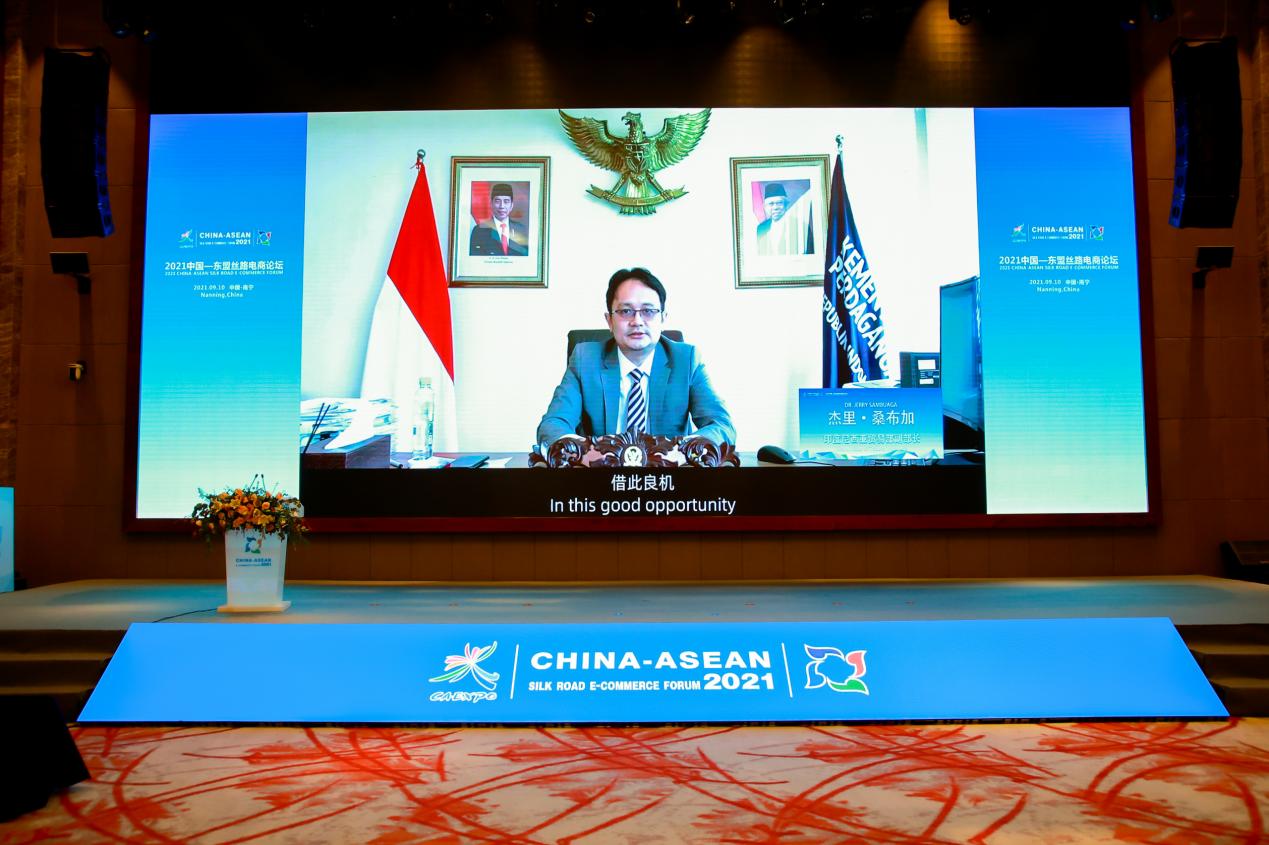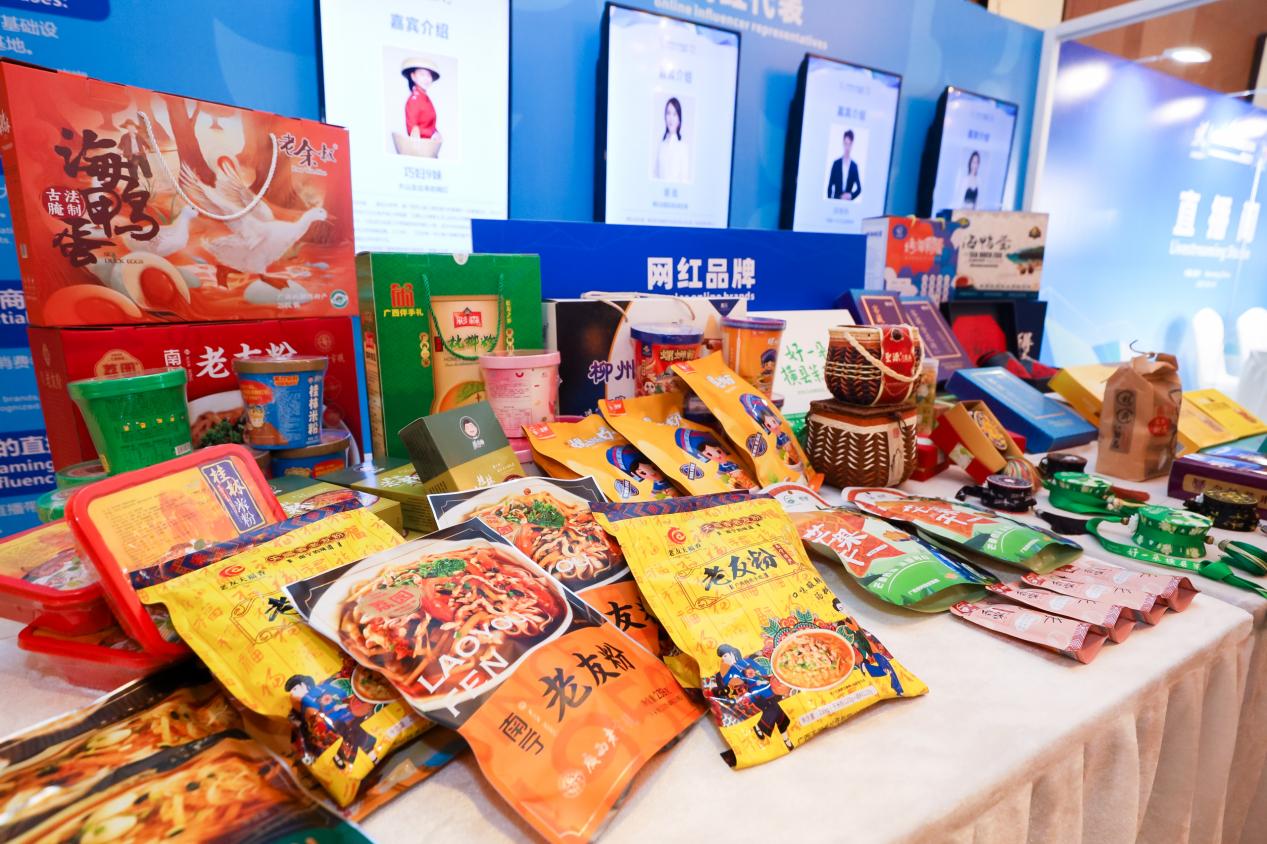

Written by Zheng You / Translated by Chen Zhiying
In recent years, with the wide application of information technologies such as big data, cloud computing, artificial intelligence and 5G, e-commerce has flourished and become an important channel for consumption, an innovative format for foreign trade development and a key driving force for economic growth.
During the fight against the pandemic, e-commerce has shown strong vitality and resilience, providing strong support for global trade to go smoothly and international anti-pandemic cooperation, and injecting new impetus to global economic recovery and growth.
Under the background, the 18th China-ASEAN Expo (CAEXPO) held in September 2021 paid close attention to e-commerce and made good use of the “Online CAEXPO” to carry out online trade and investment promotion by holding events such as the 2021 China-ASEAN Silk Road E-commerce Forum (E-commerce Forum) and Customer Preferences Day, so as to boost China-ASEAN digital economy.

China-ASEAN e-commerce market has great development potential
During the 13th Five-Year Plan period, i.e. 2016-2020, China’s e-commerce further achieved integrated innovation, and the profit was greatly improved. The national e-commerce transaction volume increased from RMB 26.10 trillion yuan to RMB 37.21 trillion yuan, with an average annual growth rate of 9.3%. The average annual growth of online retail sales in China is nearly 25%, and the online retail sales of physical goods account for a quarter of the total retail sales of social consumer goods. E-commerce has become an important driver for China to improve the operational quality and efficiency of economy and promote industrial structure adjustment.
Because of the impacts brought by the COVID-19, 87% of Internet users in Indonesia shopped online in 2020. The electronics and fashion products consumed online accounted for more than half of the ASEAN electricity market, ranking first in ASEAN. Jerry Sambuaga, Vice Minister of Trade of Indonesia, said at the E-commerce Forum that e-commerce or digital trade will obviously usher in faster growth in the near future. He said: “Under this background, our president proposed that by 2025, Indonesia should maximize its potential to account for 40% of ASEAN’s digital economy, and by 2030, the digital economy may account for 18% of Indonesia’s GDP.”

Similarly, the trade and investment in Laos have been greatly hit by the COVID-19 in 2020, the situation of which is sluggish. A number of small and medium sized enterprises and tourism have been impacted severely. Khampheng Xaysompheng, Minister of Industry and Commerce of Laos, said at the E-commerce Forum that enterprises must look forward and make an objective assessment on how to achieve the best development through possible scale adjustment or transformation. He mentioned that the government of the Lao PDR is trying to create a sound e-commerce ecosystem. At present, Laos has passed legislation on telecommunications, electronic transactions, digital signatures, cybercrime, data protection and radio frequency, hoping to promote the development of e-commerce.
Nowadays, e-commerce has played an important role in promoting development. Peng Xiaochun, Vice Chairman of the CPPCC of Guangxi Zhuang Autonomous Region, said: “The digital transformation of global economy has been accelerating. E-commerce has promoted the iterative upgrading of technology and the fast development of integrated applications. Live e-commerce, social e-commerce and cross-border e-commerce are changing consumption patterns. There is a stronger demand for e-commerce to make quality improvement and capacity expansion, and a broader space for e-commerce to make integrated innovation with industry.”
Relying on the CAEXPO, Guangxi serves as a good gateway for China-ASEAN e-commerce exchange
With the continuous improvement of purchasing power and Internet popularization, especially through mobile devices, more and more Asian consumers began to know about e-commerce, the purchasing power thus has been transferred from the United States and Europe to China and Southeast Asia.
As the exchange gateway between China and ASEAN, Guangxi, boasting the unique location advantages of “linking eleven countries with one gulf and promoting positive interactions between the east, central and west of China”, has accelerated the development of e-commerce between Guangxi and ASEAN by relying on and making full use of platforms such as the CAEXPO and the comprehensive pilot zones for cross-border e-commerce (CBEC pilot zones), and achieved remarkable results.
At present, Guangxi has two CBEC pilot zones in Nanning and Chongzuo, and three CBEC retail import pilot zones in Beihai, Qinzhou and Chongzuo. In 2020, the import and export volume of cross-border e-commerce in Guangxi increased by 360% year-on-year, higher than the national average. From January to July 2021, the import and export volume of cross-border e-commerce in Guangxi increased by 446.3% year-on-year, showing great potential and broad prospects.
Peng Xiaochun said that e-commerce cooperation between Guangxi and many ASEAN countries such as Vietnam, Indonesia and Malaysia has been deepening, and the volume of cross-border e-commerce transactions has doubled.
As a major activity under the framework of the CAEXPO, the E-commerce Forum was held many times. It has contributed to the introduction and development of more than 30 e-commerce projects in Guangxi, such as Google AdWords experience center, Alibaba’s “One Touch”, a comprehensive service platform for foreign trade and Lazada cross-border ecological innovation service center, and promoted the silk road e-commerce to become the new engine to advance China-ASEAN economic and trade cooperation and drive economic growth.
In addition, the 18th CAEXPO adopts the form of “Offline + Online Exhibition”, further improves the functions of “cloud exhibition”, “cloud conference” and “cloud negotiation”, enriches the live promotion, supply and demand product press conference and “one-to-one” video matching activities, to achieve the whole-year operation of the Online CAEXPO.
During the CAEXPO, Guangxi International Expositions Bureau and the Department of Commerce of Guangxi Zhuang Autonomous Region jointly held the 18th CAEXPO Customer Preferences Day and invited Viya, a well-known e-commerce streamer, to recommend good products of the CAEXPO to customers. A commodity show featuring Guangxi was set in Viya’s live broadcast room to sell famous and high-quality goods in ASEAN and Guangxi, thus to further improve their popularity and activate the consumption potential.

On the evening of September 11, Viya’s CAEXPO streaming lasted 4.5 hours, with a cumulative online audience of more than 18.55 million and a sales volume of more than 550,000 goods with the total value of RMB 19.51 million yuan. Commodities include Hao Huan Luo snail rice noodles, Shuangqian turtle jelly, Thai latex pillow, Vietnamese coconut water and other hot-hit products made their presence in the streaming. As soon as some product links were launched, they attracted a large number of audience and fans to purchase, setting off a small climax of the CAEXPO’s boost to China-ASEAN e-commerce development.
What else should be paid attention to when it comes to China-ASEAN e-commerce cooperation?
Although digital economy has many advantages, e-commerce still has room for adjustment and development. This puts forward more strict requirements for China and ASEAN countries in policymaking
With the implementation of the ASEAN Agreement on Electronic Commerce and the deepening of e-commerce cooperation between China and ASEAN, the construction of a healthy and good cross-border e-commerce rule system has been gradually promoted. “Clear rules must be set and good cross-border e-commerce atmosphere must be created for the common development of e-commerce, so as to build consumers’ confidence,” said Sinit Lertkrai, Deputy Minister of Commerce of Thailand, at the E-commerce Forum.
China has always actively promoted the construction of a mutually beneficial, open and transparent e-commerce rule system to create a favorable environment for the common prosperity of e-commerce along the Belt and Road. So far, 11 out of 19 FTAs signed by China include items about e-commerce
In November 2020, five countries including China and 10 ASEAN countries jointly signed the Regional Comprehensive Economic Partnership Agreement (RCEP), marking the forming of the world’s largest free trade area. RCEP explicitly supports the development of cross-border e-commerce and establishes international rules for e-commerce formats and models. With RCEP entering into force, China’s cross-border e-commerce enterprises and cross-border logistics enterprises have seized the opportunity and actively made preparation in advance.
Zheng Min, CEO of Ebrun, who attended the e-commerce forum, believes that in the future, global e-commerce will enter the a stage of network operation. He said: “deep collaboration is the future of global e-commerce. China-ASEAN cross-border e-commerce should hold on to the opportunities brought by the RCEP and jointly explore a development path for e-commerce.”
Mao Junjie, International Vice President of SF Group, believes that stability, diversification and perfection have become the pursuit of cross-border logistics. He said: “Under the background of RCEP and the New Western Land-Sea Corridor, SF has played a part in building the cross-border logistics channel in Guangxi facing ASEAN from five aspects such as transportation network and service system.”
As a new business still booming under the pandemic, deepening the e-commerce cooperation between China and ASEAN will be of great significance to improve the stability, security and international competitiveness of regional industrial chain and supply chain in the post-pandemic era.
桂ICP备14000177号 Copyright@2006-2013 Guangxi China-ASEAN Panorama Magazine Agency Co., Ltd. All Rights Reserved